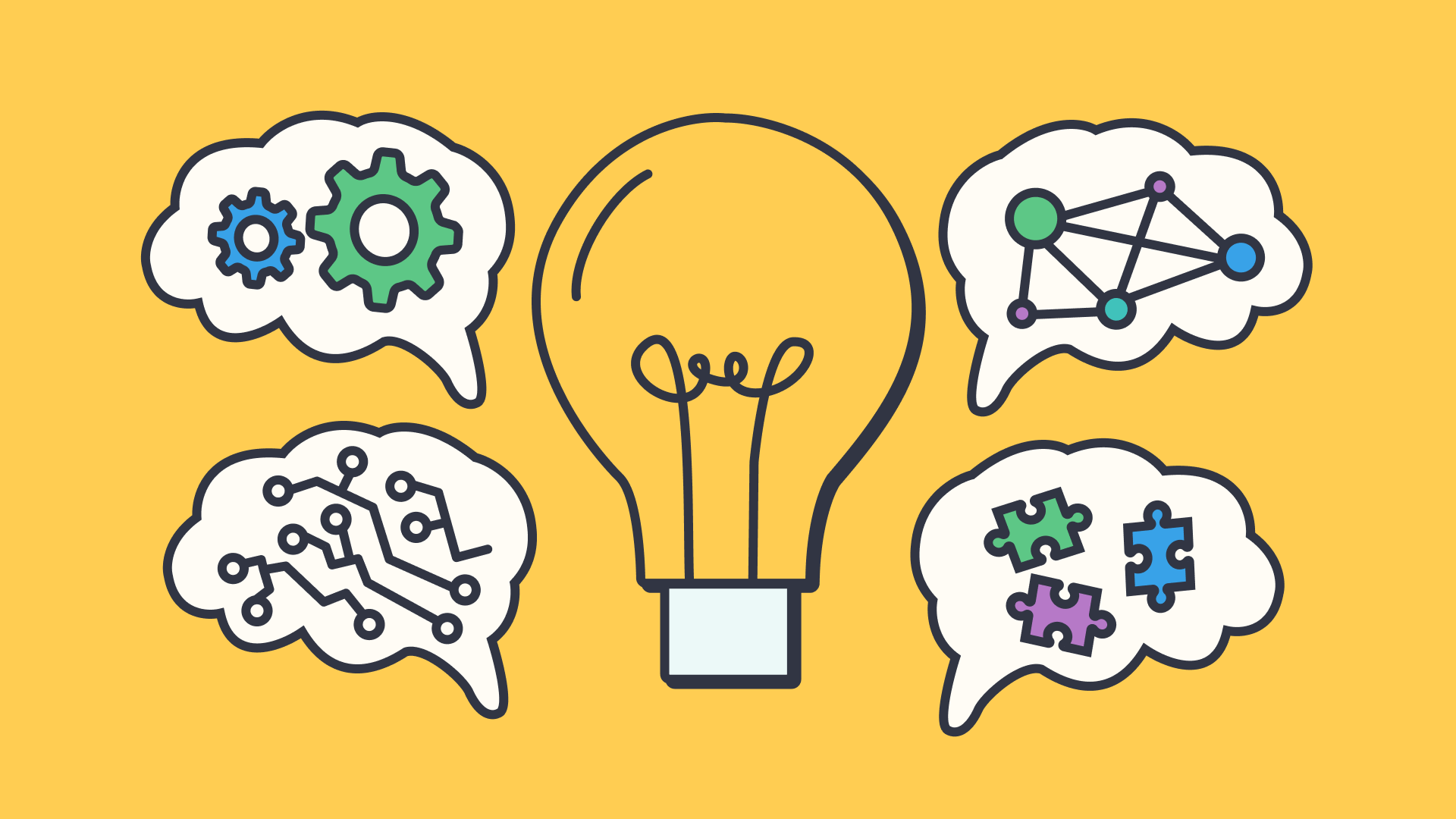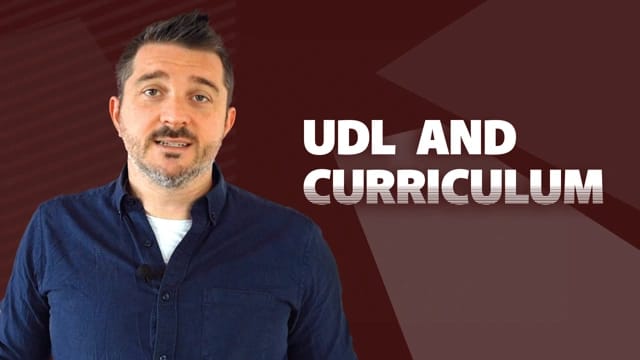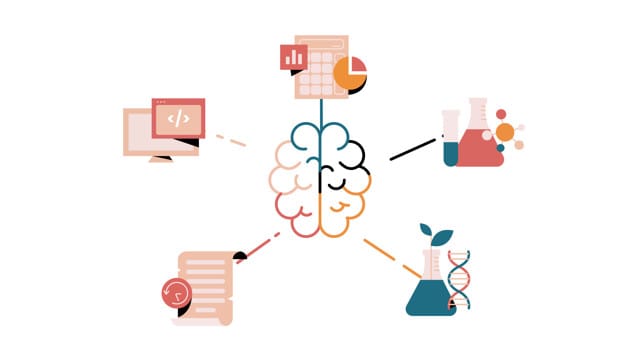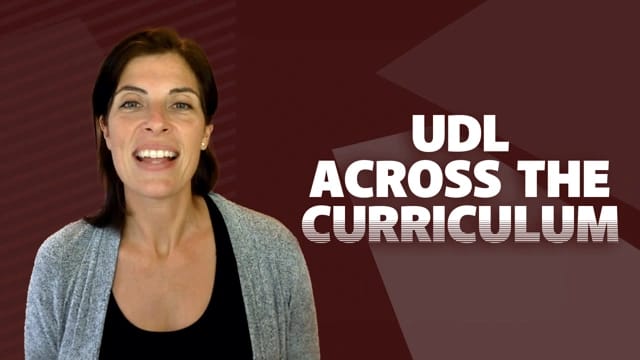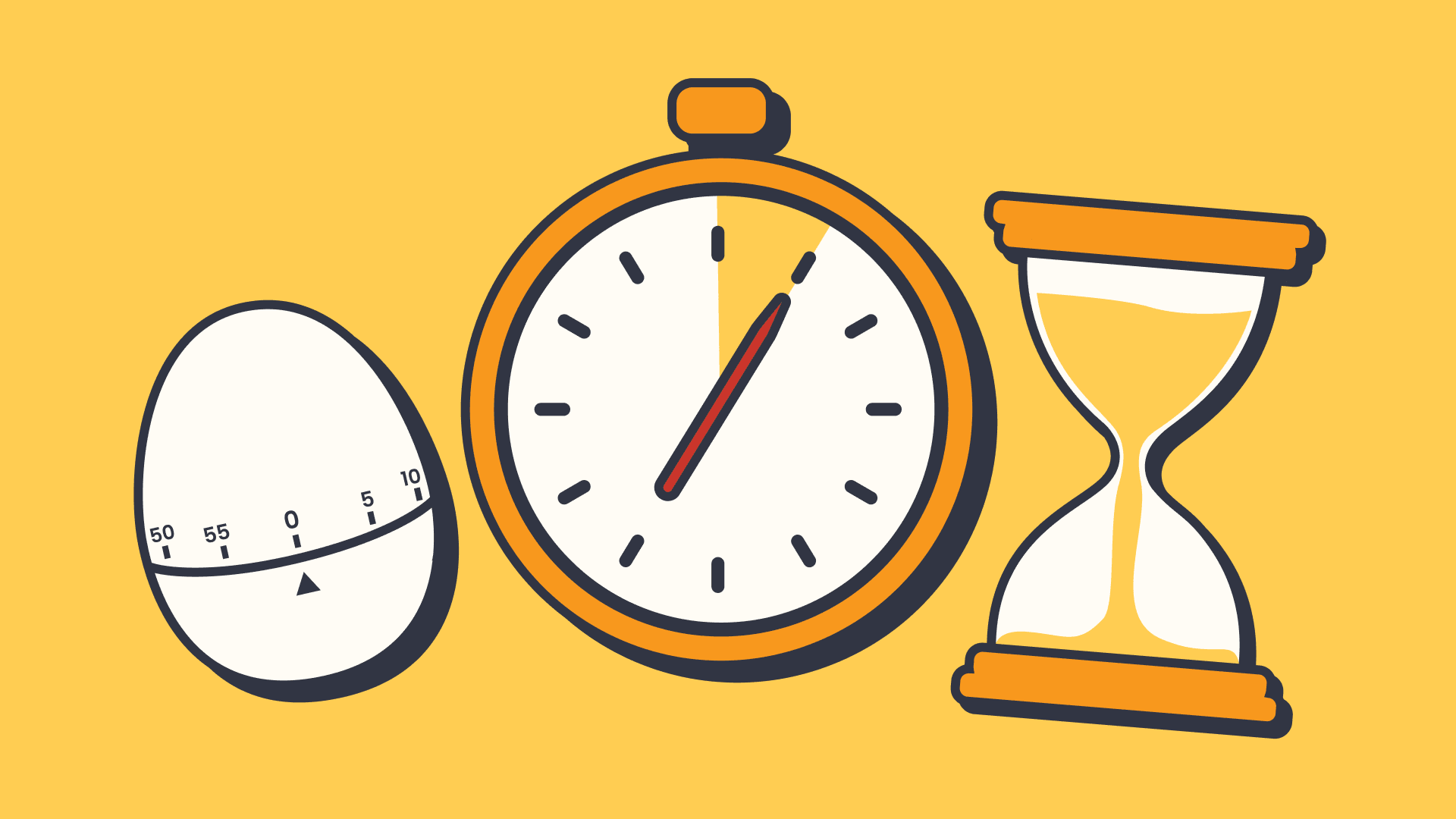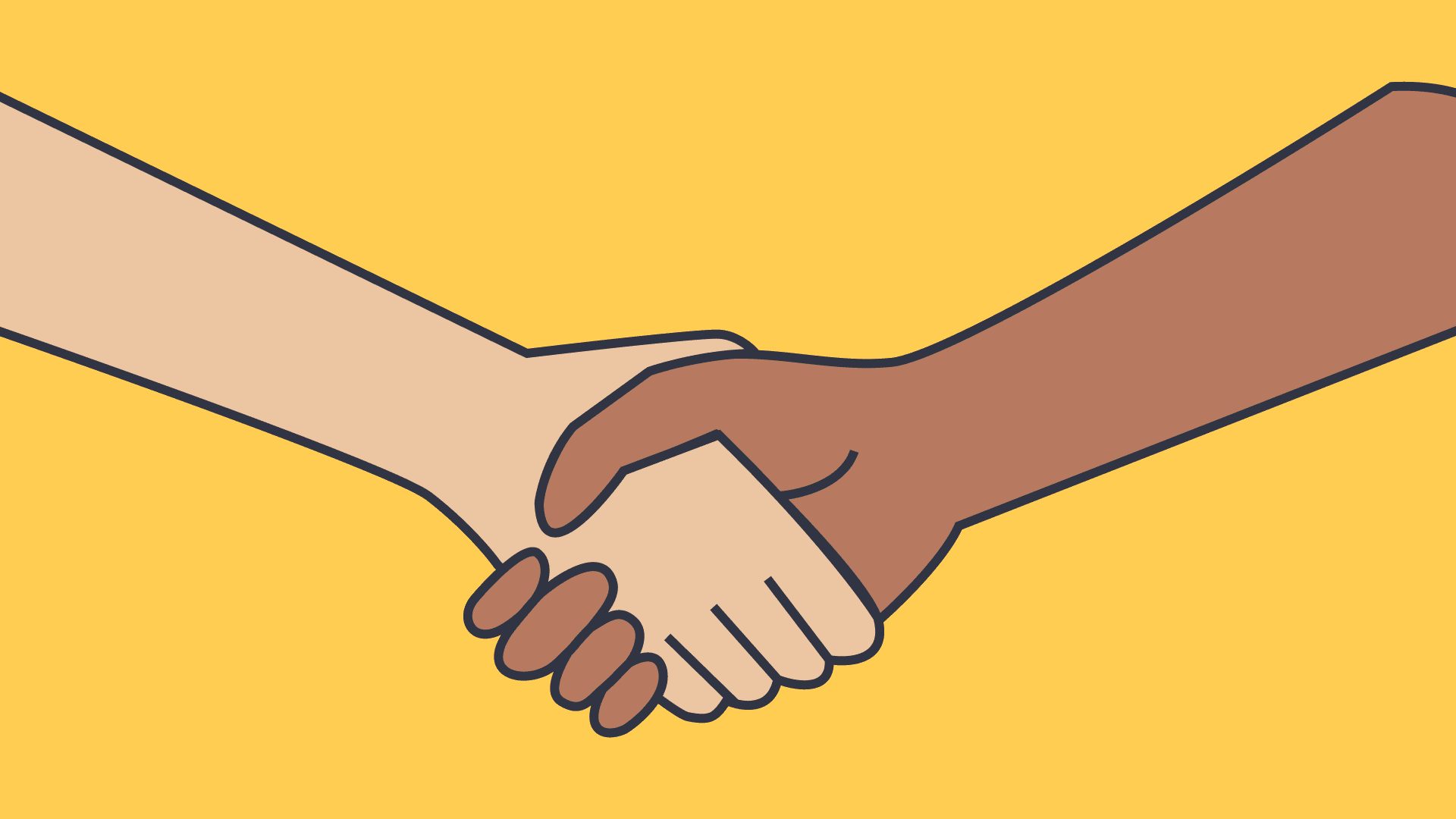A comprehensive guide to universal design (UDL) in the classroom
In this guide
What is Universal Design for Learning (UDL)?
I can still vividly remember that day of professional development at the very beginning of my career. The theme for the morning was “differentiated instruction” and understanding that each of our students came into class with their own unique strengths and needs. It made so much sense and I felt like we were really moving toward a more personalised style of education.
Then, after lunch, we all came back and the rest of the day was spent looking at standardised test scores. We looked at the data but the directive was clear: make sure each and every student performed at the same level on this one assessment that measured a very narrow set of skills and knowledge.
I could understand the goal of administration but this experience could not help but make me a little cynical about what we were being asked to do as educators. I still believed in differentiated instruction and made it a focus in my classes even though the organisational support and goals were not aligned with this mission.
It was not until years later, while attending a conference, that I was introduced to the Universal Design for Learning Guidelines. Finally, I felt like I had a framework and toolkit to make differentiation not only more manageable, but also more effective.

Universal Design for Learning (UDL) is a framework to improve teaching and learning for all people based on the science of how humans learn. The goal of UDL is to remove barriers and maximise learning for all students.
UDL is organised into three core principles:
- Engagement
- Representation
- Action and Expression
Engagement
Addresses the “why” of learning by focusing on how to stimulate students’ interest and motivation for learning. Students differ in the ways they can be engaged or motivated to learn, and creating multiple pathways to engagement can help accommodate these differences. The goal of this principle is to create learners who are purposeful and motivated.
Key Aspects:
- Recruiting Interest: Optimise choice, relevance, autonomy, value, and authenticity.
- Sustaining Effort and Persistence: Clarify goals, optimise challenges, foster collaboration and community.
- Self-Regulation: Develop students’ abilities to set goals, monitor progress, and self-reflect.
Representation
Pertains to the “what” of learning by offering multiple ways of presenting information to accommodate different learning styles and sensory needs. Students perceive and comprehend information in different ways and at different rates. The goal of this principle is to create learners who are resourceful and knowledgeable.
Key Aspects:
- Perception: Offer alternatives for accessing and/or customising information.
- Language and Symbols: Clarify language, symbols, and support vocabulary development.
- Comprehension: Aid understanding by highlighting critical features or big ideas, activating prior knowledge, and guiding information processing.
Action and Expression
Involves the “how” of learning, focusing on how students demonstrate what they know. Students express their knowledge and understanding in different ways and providing multiple means of action and expression can accommodate these differences. The goal of this principle is to create learners who are strategic and goal-directed.
Key Aspects:
- Physical Action: Provide different methods for students to interact with materials and tools, including assistive technologies.
- Expression and Communication: Use multimedia for communication and multiple tools for construction and composition.
- Executive Functions: Support students in goal-setting, organisation, and self-monitoring skills.
The UDL framework can feel overwhelming at first but try to view it like a spice drawer in your kitchen. Pick and choose the specific spice(s) that you want based on what you are trying to make. If you try to use every spice you own, your dish will probably taste terrible. Approach UDL the same way. Look to implement different concepts or ideas, as needed, based on the students in your class and their specific learning goals.
If you want to dive deeper and get some great tips about UDL in action take a look at these videos:
- How to Use Universal Design for Learning to Design Curriculum
- Case Study: The Universal Design for Learning in Action
- Using Universal Design for Learning Across the Curriculum
- Is Universal Design for Learning Effective Online?
1) Facilitate personal coping skills and strategies
I think one thing that most teachers can agree on is that social and emotional issues in students have been on the rise for sometime now. I remember talking to a colleague earlier this year and she said she felt that her job had become more of a therapist than a teacher. If you have been in a classroom recently, you are aware of the serious emotional struggles many students are dealing with.
One of my favourite things about teaching entrepreneurship is that we get to focus a lot on the mindsets that help people be successful. It is a direct part of our curriculum but it is apparent that helping students develop new habits pays off in all areas of their lives.
At the beginning of the year, and then at regular intervals throughout the year, we discuss the difference between reacting versus responding. A student who receives a bad grade on a test could react by blaming the teacher, telling themselves they are stupid, or just simply giving up in the class. Clearly, this is the behaviour we want to avoid.
Instead, we practise how to respond to difficult situations so that instead of becoming a victim of the circumstances, each individual can intentionally choose how to respond. This helps students develop a sense of control even when things are not going their way. Responding to a bad grade could include reflecting on their actions leading up to the test, setting up a time to discuss options with the teacher, or acknowledging that it is just one measurement in their long lives.
Even if this specific example does not directly align with your content area, remember, including these elements in your class will help remove barriers to learning. A student that self-destructs in the face of challenge is going to struggle to learn any subject. Plus, if you teach secondary students, this lesson comes in handy if they miss out on their university course of choice.
Here are some other great ways the UDL framework can help increase emotional capacity:
- Emphasise process, effort, and progress regularly to help promote a growth mindset. When students focus solely on grades and external measurements they risk overlooking the transferable skills that transcend the immediate learning goals.
- Actively seek out individual identities and interests that expand the variety of perspectives in the classroom. Ensuring that students feel heard and valued will make them more comfortable to take risks when it comes to contributing and creating.
- Create a culture of learning that directly addresses and analyses various forms of bias. Normalising bias and encouraging students to actively identify it when they see it empowers them while developing critical literacy skills.
- Be mindful of sensory stimuli throughout the learning environment. Including quieter times and dimmed lighting provide alternatives to the normal classroom setting that can help students regain focus and a sense of calm.
- Establish a sense of community by allowing students to develop classroom norms and to hold each other accountable to these expectations. By minimising your role in this area as a teacher you are providing a safe space for students to grow as individuals who are comfortable engaging in difficult conversations.
- Employ differentiated models and scaffolds to help students better handle frustration and setbacks. Encourage students to focus on action statements rather than judgement ones. Stress the difference between saying “I’m not good at tests” and “before taking a test I need to…”

2) Use multiple media for communication
Years ago I came across research that found learning from reading is a challenge for most people since it requires so much cognitive load simply for the process of reading. I already loved podcasts at the time so I figured this would be a great way to replace traditional reading assignments with this different medium.
I was finding all kinds of interesting podcasts related to the topics we were studying and was having a blast modifying my curriculum. Unfortunately, student feedback was pretty mixed when it came to how effective the podcasts were for them. Luckily, one student requested a transcript of a podcast and that sparked a whole new perspective.
She told me she enjoyed the podcasts but had a hard time processing the information in that form. Then other students chimed in with similar issues and I realised I was providing a format that I knew worked for me and did not actually address the core problem I was trying to solve: providing resources that meet individual needs.
The best part of this experience is that it was a quick and easy fix. Now, when using podcasts I also include a link to the transcript as well as the video version (if available). I provide a streamable link as well as a downloadable file.
In the past couple years I have noticed more and more students using online programs that read an article aloud for them. At first, it seemed odd. Now, I am jealous that I did not have access to technologies like that when I was in school. At the end of the day, why do I care if they read, watch, or listen to content I want them to know? The goal is learning it so the more accessible, the better.
Here are some other great ways the UDL framework can help support expression and communication:
- Allow flexibility when it comes to the rate, speed, or timing students have to interact with instructional materials. For example, allowing an article to be read outside of class time removes the pressure for students to complete their reading at the same pace of their classmates.
- Stress that various modes of expression that are aligned with the learning goals hold equal value. Students should feel confident in choosing a mode of expression that represents their learning in the best way possible. Help eliminate any value hierarchies that minimise certain forms of expression (e.g. writing being more important than video creation).
- Allow students to access and utilise tools they interact with outside of class in order to promote the learning process. Limiting students to traditional tools not only signals a bias against their interests but also prevents students from engaging with tools needed for their future.
- Incorporate physical manipulatives into learning activities whenever possible. In an increasingly digital world, the tendency is to rely on technology to support instruction. Humans are programmed to learn kinesthetically so providing hands on resources creates another avenue for engagement.
- Incorporate a variety of media throughout instructional activities to reach students with different interests and strengths. Music, movies, comic strips, dance, and art are all ways to tap into individual preferences that can engage students on a deeper level.
3) Optimise access to tools and assistive technologies
I recently completed a Master’s in User Experience Design (UXD) and was able to take a course on accessibility. We were introduced to Universal Design as well as the Web Content Accessibility Guidelines (WCAG) to make the internet more accessible for people with disabilities. The big takeaway was that designing for accessibility leads to better design for everyone.
Most assistive technologies for students will typically be coordinated with the special education department at your site and that student’s specific case carrier. These technologies can be quite expensive and are not ones that would be supplied for every student in every classroom.
Luckily, there are an increasing number of options available that teachers can incorporate into their classes without much work and can benefit any student that needs or wants it. This can be as simple as showing or allowing students to customise their learning devices to fit their personal preferences. I have some students decrease the brightness of their screens so low that I cannot see anything when I am trying to help them. It works for them though.
Programs like Grammarly and ChatGPT can be introduced for students who struggle with writing and need a little boost to keep them motivated. Writing is such a huge part of school and life but we need to be careful that we do not limit options for learners who struggle in this area. Think about a student who has a love of history stripped away by continually underperforming on written essays or reports.
In addition, I have allowed students to record certain parts of class and even take notes or complete assignments using voice recordings. Sometimes we assume that because kids are constantly on devices that they will feel comfortable typing but that is not the case. Even as I write this, I cannot wait for the day I no longer need to use the QWERTY keyboard.
Here are some other great ways the UDL framework can help increase accessibility:
- Allow for as many student controls as possible when utilising multimedia. Playback speed, closed captioning, stopping/starting/rewinding, size, brightness, and volume are all options that give learners the ability to modify the resources in a manner best suited to their needs.
- Be intentional with your choice of font and size. Certain fonts work better in print while others are designed for screens. This can impact a student’s ability to read the words as well as the accuracy of screen reader programs. Check out the Australian Government Style Manual to understand more about typography and accessibility.
- Embed support for vocabulary, symbols, and references. Simple hyperlinks or buttons are a great way to allow students to access additional information, if needed, to maximise understanding.
- Design physical learning spaces that emphasise flexibility and adaptability. Preferential seating, adjustable lighting, and movement allow students to work in an environment that matches their needs.

4) Optimise individual choice and autonomy
As part of my User Experience Design (UXD) Master’s program, I was required to conduct research so I always tried to focus on education related fields. In one particular project I was trying to uncover what factors increased or decreased a student’s level of empowerment in school.
Most of my career up to that point had been focused on engagement but after reading George Couros’ The Innovator’s Mindset, I realised that empowering students was a much more important goal. Engagement was a temporary result but empowerment could be a lifelong skill.
With the help of colleagues, I identified a group of students with a variety of academic and extracurricular backgrounds to interview in a one on one setting. I spoke with each student for about 30-40 minutes and while the results were not surprising, they were definitely powerful.
Every student I spoke with pointed to their favourite class being one they specifically chose. That did not mean it was their favourite teacher but what they were learning and doing stood out from required courses. Also, the most meaningful project they ever worked on in school was something they created and had options in how they completed it. Sadly, students who did not have answers for these questions were the ones that could not identify many opportunities for choice in their school experience.
We all know that choice is associated with more positive outcomes. Where we go out to dinner, who we go with, at what time, and with whom all make that dining experience more enjoyable than being forced to eat an early meal at a subpar restaurant with your in-laws…
Allow students to have a voice in the design of classroom activities and academic tasks.
Involve them in setting their own personal academic and behavioural goals throughout the year. It is their education, so they need to directly participate in the process.
Be careful of going overboard with choice though because that can lead to a type of decision paralysis that creates a new barrier. I used to include a “Build Your Own Module” in my digital media design class where students could choose anything they wanted to work on. It was regularly the least completed project of the semester. Instead, provide structure that makes those choices easier.
Assigning an open-ended project like a digital poster to demonstrate their skills with a specific piece of software may be well intentioned but could lead many students to get stuck on an appropriate subject. Instead, asking students to create a digital advertisement for one of their favourite products allows for a lot of options and individual choice while providing enough structure to get them started.
Here are some other great ways the UDL framework can help increase student agency:
- Support students with breaking long term goals into multiple short term objectives to help make the learning process feel more manageable. Encourage students to use a journal or spreadsheet to help them design and track their progress.
- Create protocols that establish clear procedures for students to learn when and how to ask for help. Consider making this protocol visible through posters around the room as well as publishing it on your class website or LMS.
- Offer feedback that is timely, frequent, specific, and action-oriented. Include questions in your feedback that encourage students to consider other perspectives as well as next steps for improvement.
- Design regular opportunities for both individual and group reflection in order for students to recognise their progress and improvements along the way. Notes or graphic organisers with columns that address ‘What I knew or could do before this unit’ and ‘What I know or can do now’ make the learning process feel more tangible.
- Co-create and facilitate classroom protocols and norms. Inviting students to participate in this role transforms the learning experience from a passive one to one with a sense of shared ownership and responsibility.
5) Activate or supply background knowledge
Connecting new information to information we already know is one of the best ways to learn. It allows our brain to make sense of new concepts by anchoring it to memories we already have fully established. I remember when my son was 2 or 3 years old, every 4-legged animal we encountered he called a dog. Horses, cats, goats all were dogs in his mind as he tried to understand new stimuli.
The tricky thing with this UDL principle is that not all students show up with the same background knowledge. A reference to a Taylor Swift song during a poetry lesson might land for some students but completely miss the mark for others. Reference and context is important but going a step further can have even more impact.
The key is to help students identify and utilise background knowledge they already possess but do not necessarily recognise as relevant to the content being studied. In my photography classes I used to use famous photographs when discussing foundational concepts like lighting and composition. The problem is that as I got older, my idea of famous photographs did not necessarily align with my students.
So I pivoted and started asking students to use their favourite photograph, whether it was one they took themselves or saw online. This helped students more easily visualise and remember the concepts since they could quickly reference the imagery in their mind. If they needed to use soft light, they could remember what the lighting looked like in that anchor photo as a way to help.
The more students can activate their own personal background knowledge, the more success you will see with this principle. In addition, it takes some work off of your plate since they will be providing the examples and each class will have new or different examples. Then, you can do what I do and steal some of those examples to use in other classes so it seems like you are still plugged in to what is cool and contemporary (but do not use those words in front of your students).
Here are some other great ways the UDL framework can help deepen the student learning:
- Pre-teach important concepts or vocabulary to ensure that discrepancies in background knowledge do not create unintended barriers for some students.
- Utilize metaphors and analogies to help anchor new concepts to well known and concrete examples from everyday life.
- Incorporate both examples and non-examples when covering new material to activate prior knowledge. Encourage students to contribute their own examples or non-examples using the Frayer Model.
- Build opportunities throughout the school year to revisit previous ideas and make connections between learning materials. Use prompts such as “What we are learning about now reminds me of…” and “This new information/event/concept is related to…” for discussion sparks.
Sources
- About Universal Design. (n.d.). Centre for Excellence in Universal Design. Retrieved June 27, 2024, from https://universaldesign.ie/about-universal-design
- CAST. (2018). Universal Design for Learning Guidelines version 2.2. Retrieved June 23, 2024, from https://udlguidelines.cast.org/
- Couros, G. (2015). The Innovator’s Mindset: Empower Learning, Unleash Talent, and Lead a Culture of Creativity. Dave Burgess Consulting, Incorporated.
- Understanding Accessible Fonts and Typography for Section 508 Compliance. (n.d.). Section508.gov. Retrieved August 8, 2024, from https://www.section508.gov/develop/fonts-typography/
- WCAG 2 Overview | Web Accessibility Initiative (WAI). (n.d.). W3C. Retrieved June 24, 2024, from https://www.w3.org/WAI/standards-guidelines/wcag/ Wisconsin Department of Public Instruction. (n.d.). Frayer Model. Retrieved August 8, 2024, from https://dpi.wi.gov/sites/default/files/imce/ela/bank/6-12_L.VAU_Frayer_Model.pdf

Nick Schwab
briefcase iconLearning Experience Designer
Nick combines his background in psychology, education and design to create physical and digital experiences that empower, engage, and excite learners. His passion lies in constantly developing new learning pathways for students that challenge the status quo in education.
Other posts
Want more content like this?
Subscribe for blog updates, monthly video releases, trending topics, and exclusive content delivered straight to your inbox.

